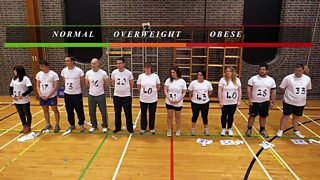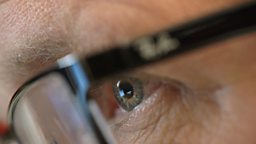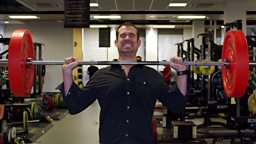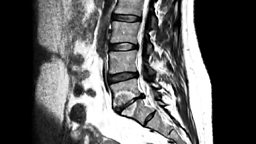Can you be ‘fat’ and still healthy?
Dr Saleyha Ahsan meets Prof Janice Thompson from the University of Birmingham and together they investigate two very common measures of 'fatness' to see whether either of these measurements give a good indication of the all-important thing – how healthy we are.
They focus on BMI (Body Mass Index), and percentage body fat, measured using a body fat meter, and compare these with something that research has shown correlates very well with our health: our aerobic fitness, which can also be measured.

BMI dates back to the mid nineteenth century and is simply calculated by dividing your mass in kilograms by the square of your height in metres. It therefore gives a rough indication of how heavy you are for your height, but it was never intended to be any kind of guide to your individual healthiness, and the standard doctors' classifications ('normal weight' being a BMI of between 18.5 and 25, and 'obese' being a BMI of 30 or above) end up classifying many muscular athletes as obese. It takes no account of where your weight is distributed, or what makes it up (fat, muscle or bone).
Body fat meters have become popular recently, as an alternative to crude measurements such as BMI. They measure the electrical conductivity of your body and then use that, plus a number of other pieces of information such as your weight, height and gender, to estimate how much of your body is made up of fat.
Doctors recommend that women have a body fat percentage below 32% and men below 25%. However, body fat meters not only have a high degree of inaccuracy, they don’t take account of where your body fat is on your body, and this makes a huge difference to your health. Fat stored around the organs, in your belly, can be very bad for your health, whilst fat on the hips, bum or in other places is much less dangerous.
In our film, some of a group of volunteers who were classified as 'fat' by both their BMI and body fat percentage turned out to be very fit (measured by something called their VO2 max, which calculates their body's oxygen uptake when doing exercise), and being fit has been shown to be a good indicator of healthiness.
What's the answer?
So, what can we do to keep an eye on whether we are getting unhealthy? Firstly, don’t rely on what you see in the mirror – get out and do some exercise.
But there is also a second, very easy little test. Take a tape measure and measure your waist size: that's measured slightly above where your belly button is (NOT your trouser band!). This is a good estimate of how much of that dangerous belly fat you are carrying.
Women should have a waist less than 35 inches/88cm, and ideally less than 32 inches/80cm. Men should have a waist less than 40 inches/102cm, ideally less than 37 inches/94cm.























































































